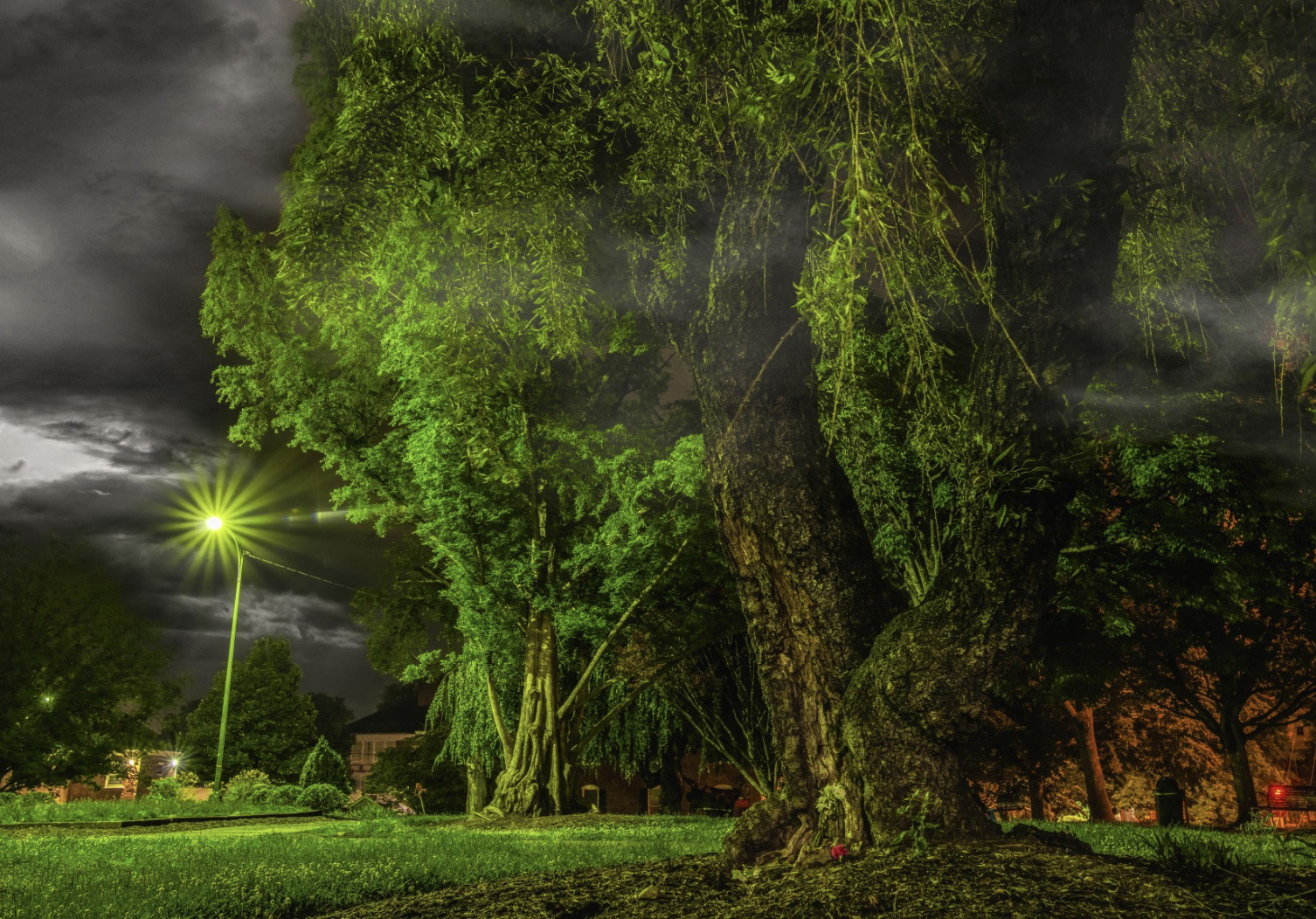
War, death, and political violence lay the foundation of one of America’s oldest cities: Charlottesville, Virginia. Woven within the fabric of the city is a legacy of bloodshed, as Charlottesville played a significant part in propelling the Confederate Government during the American Civil War. And the sins of its past seemingly continue to haunt its present, particularly at Market Street Park, the site of modern-day controversy and hellish horrors.
Join Charlottesville Ghosts to uncover the hidden dark side of this otherwise inconspicuous greenspace and hear the chilling truths and real-life accounts of the famous spirit who’s said to roam the park from beyond the grave.
Charlottesville was a key location in the Confederate war effort when it came to providing hospital beds, swords, uniforms, and other resources to troops. Since it was well known for its industry, Charlottesville was able to produce necessary equipment for wounded soldiers, including a prosthetic leg for Confederate General John Bell Hood.
He famously admitted that he favored the Charlottesville one over the prosthetic he’d received from France, saying, “The Charlottesville leg is a far better looking one than the French one.” If injured in battle, men would often go to recover or undergo painful operations at Charlottesville General Hospital, a makeshift military medical center belonging to the University of Virginia.
The toll the Civil War took on the US population was nothing short of devastating, with an estimated 620,000 soldiers having died between 1861 and 1865. Particularly troubling was the way enslaved African Americans were treated during the war, their labor impressed by the Confederate Government against their will. Slaveowners would “loan out” their African Americans to fight or work in factories, and free Blacks were taken by gunpoint if they didn’t report to the courthouse to be examined for how they could assist in the war effort.
While the fighting generally stayed outside of Charlottesville, the effect this had on the city was staggering. Thousands of men were buried in unmarked graves in a nearby field adjacent to the University Cemetery, a gruesome reminder of the cost of this bloody and horrific conflict.
Robert E. Lee is perhaps one of the only household names to come out of the American Civil War. From 1861 to 1865, Lee served as a general of the Confederate Army, fighting alongside other Southern Military leaders such as Stonewall Jackson and J.E.B Stuart. Towards the end of the fighting, Lee was appointed overall commander of the Confederate States Army, leading the powerful Army of Northern Virginia until its surrender on April 9, 1965.
Lee famously surrendered to Union leader Ulysses S. Grant at Appomattox Court House following the capture of Richmond and the destruction of a large number of Lee’s troops. Despite his defeat, Lee went on to become president of Washington College and died in 1870 as a cultural icon of the South.
When visiting the city in an attempt to preach, Dr. Conrad Speece once famously said, “When Satan promised all the kingdoms of the world to Christ, he laid his thumb on Charlottesville.” And many Charlottesville residents would agree that this much is true, as the town has become synonymous with strange hauntings, horrific accidents, and terrifying encounters with strange creatures that hide in the depths of the surrounding forest.
Is Charlottesville forever cursed for the sins of its past? Perhaps. But one particular spirit has made itself especially known throughout the years: the ghostly apparition of none other than Robert E. Lee. Since his troubled legacy has come into question in recent years, Lee’s issues on Earth continue to follow him into the afterlife. While it was still there, visitors to Market Square Park reported seeing the Lee and Traveler statue moving as if ready to charge into the fray. Some have also claimed to have seen a translucent horse and its rider gallop through the park only to disappear into the night.
While this phenomenon might seem strange, it’s far from the only place Lee’s ghost has been said to haunt. As a matter of fact, over a dozen locations across the US have reported sightings of Lee’s ghostly figure, including his home in Arlington and at various Civil War battlefields. Sightings have also been reported at the Lee Boyhood Home in Alexandria, which continues to operate as a museum.
Robert E. Lee’s name has always stirred controversy, but as of late, Lee’s name has become increasingly associated with extremist political movements. Throughout his life, Lee famously campaigned against equal rights for African Americans and likely had several slaves under his ownership throughout his lifetime.
In 2021, the city finally removed the statue of Lee and, prior to this, changed the name of the park to Emancipation Park. Unfortunately, the consequences of his legacy and the people he continues to inspire today very much live on. For more on haunted Civil War history, visit our blog, and be sure to keep up with US Ghost Adventures on Facebook, Instagram, and TikTok.
Sources Cited:
https://en.wikipedia.org/wiki/Market_Street_Park
https://thelateunpleasantness.wordpress.com/2013/07/23/the-haunted-homes-of-robert-e-lee/
https://en.wikipedia.org/wiki/Unite_the_Right_rally#Removal_of_statues